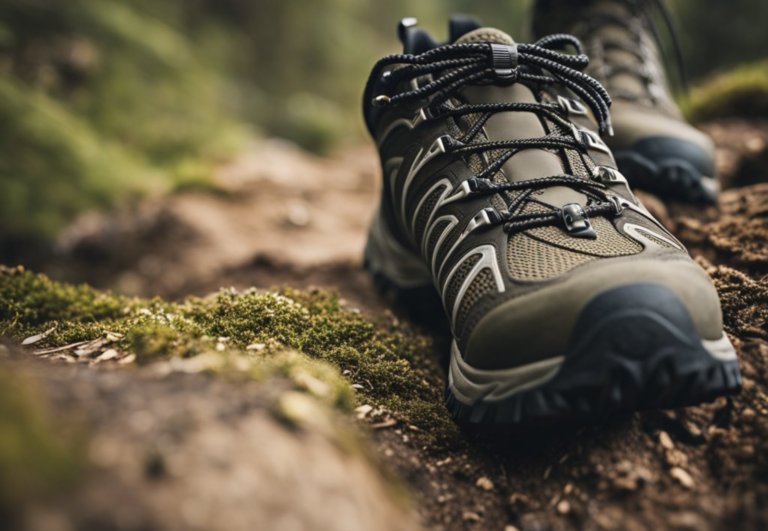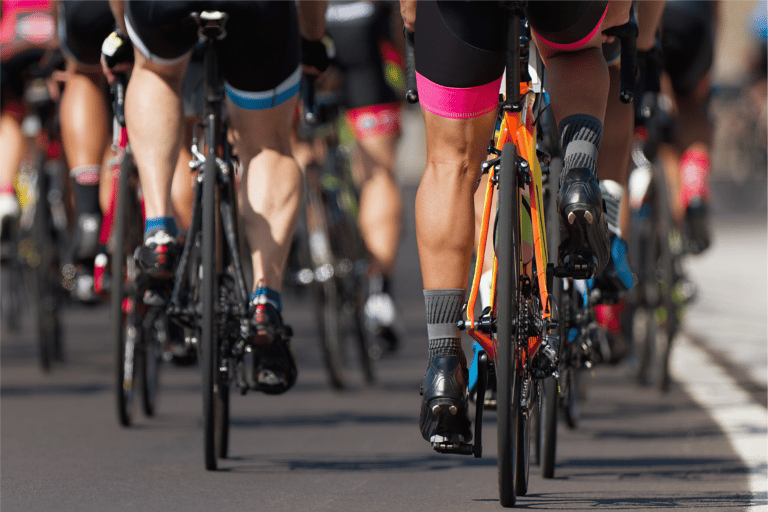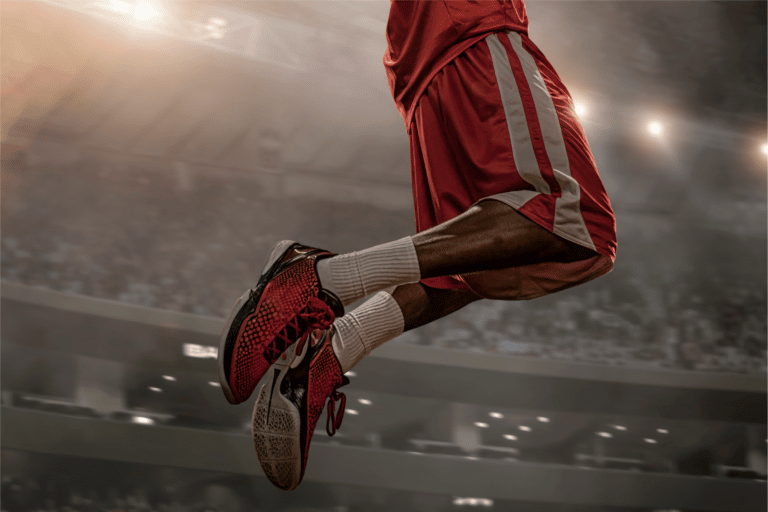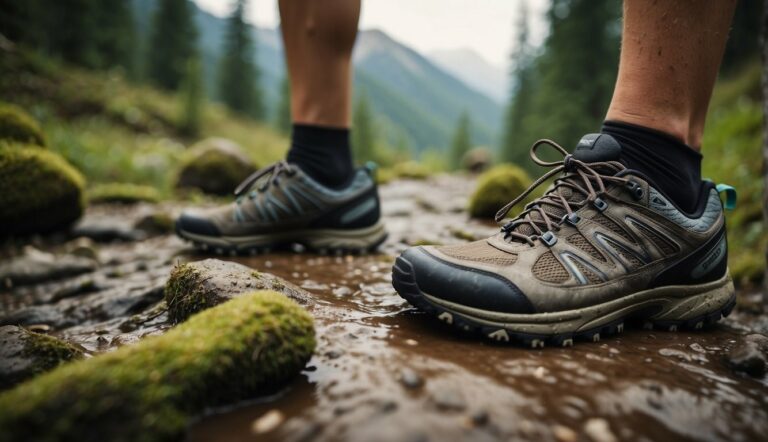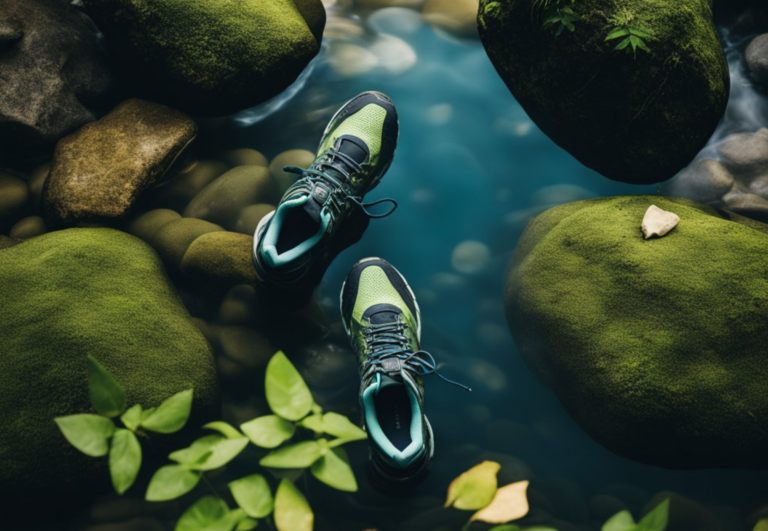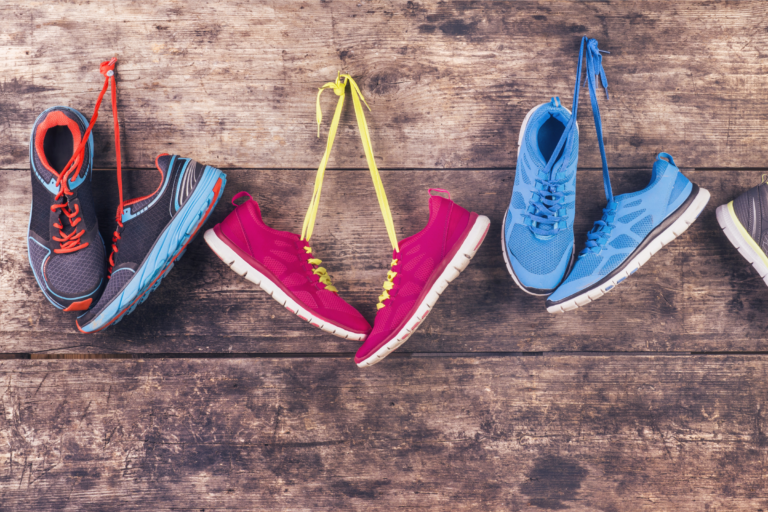Running in Water Shoes: Are They a Legitimate Option for Minimalist Runners?
While most modern running shoes use cutting-edge materials, cloud-like cushioning, and precise designs to account for your pronated or supinated stride, there is a movement that goes in precisely the other direction. Minimalist running encourages runners to return to their most natural style, with some even going so far as to encourage barefoot running. If you’ve ever run on hot asphalt, you know that’s out, but what if you’re looking for a cheap way to try out minimalist running? Are wet shoes a good option?
You should not run in water shoes because they simply aren’t made for it. Running shoes – even minimalist ones – are designed to be moisture-wicking, durable, and to provide at least some cushioning. While they may look similar, water shoes have a firm sole and the upper will dry quickly but is unlikely to help sweaty feet.
Continue reading to find out why water shoes are not a good solution for runners. You’ll also learn the differences between barefoot shoes and water shoes, if water shoes are the same as minimalist running shoes, and find a comprehensive look at the design, cushioning, durability, and moisture-wicking technology found in water shoes which will give you a complete outlook and detailed comparison between barefoot shoes and water shoes.
Is it okay to run in water shoes?
Although the lightweight feel of water shoes can be a good fit for barefoot runners or those involved in the minimalist footwear movement we are seeing today, do water shoes tolerate the extreme demands of high-performance running?
Running in water shoes isn’t a good option for serious runners, mainly due to a lack of durability, cushioning, and moisture-wicking technologies. Water shoes are better designed for off-grid applications such as protection from underwater and off-road hazards.
Water shoes are ideal for scenarios that demand a high level of protection, but the overall lack of consideration for a runner’s foot, and the different types of stress that runners put their shoes through eliminate water shoes as a solution for runners.
Are water shoes the same as minimalist running shoes?
Although, at a glance, water shoes and minimalist running shoes may seem very similar in design and style, their thin material, all-terrain design, and focus on grip for underwater scenarios leave them with holes in categories desired by serious runners, such as durability, cushioning, and moisture-wicking technology.
Water shoes are not the same as minimalist running shoes because of the thin mesh and stiff soles usually found in water shoes that give them the capability to dry quickly and protect users’ feet.
Most water shoes can be found at a relatively low price and are designed to provide comfort in the water. Minimalist running shoes may be a bit more expensive. Still, they give buyers increased overall comfort, stability, and shock absorbance than water shoes, making them a better solution for running.
Barefoot shoes vs water shoes
While barefoot shoes and water shoes may look similar, they have very different purposes.
Although barefoot shoes and water shoes are designed to protect feet from outdoor obstacles such as rocks and stumps, barefoot shoes are much more suitable for running because of the overall combination of materials, cushioning, durability, and moisture-wicking technology.
I researched specifics of some popular barefoot and water shoe brands to show that barefoot shoes are much more suitable for running than water shoes. The results are organized below to carefully break down the comparisons between barefoot shoes and water shoes.
All the shoes I compared were in the $40 range to maintain a similar price point and ensure research accuracy.
Design and ergonomics
Given that they are used for drastically different purposes, it may not be surprising to find out that, while they make look a bit alike, the design of water shoes and barefoot running shoes have very little in common.
Most barefoot shoes feature a lace-up system to ensure the shoe is safe and secure around the runner’s foot. Water shoes typically use a bungee that is likely to break when running.
Barefoot shoes are generally designed to balance flexibility and durability, preserving the barefoot feel wearers desire while protecting their feet.
In contrast, water shoes often feature a bungee to tighten the shoe and provide comfort. The bungees used in the shoes are great for an easy slip-on, slip-off feel but are often prone to breakage, especially when used in running situations.
Support and cushioning
Heavy-duty support and cushioning may seem like a surefire way to avoid injury when running, but some studies have actually shown otherwise.
Barefoot shoes provide minimal cushioning and support, but enough to protect runners from injury. Water shoes have a stiff sole to protect users from underwater threats and may lead to injury when used for running.
While a lightweight and flexible feel is a focus for barefoot shoe manufacturers, these shoes are also designed for daily exercises and physical activities like running. The insoles in barefoot shoes provide enough cushioning and foot support to keep runners healthy and prevent injury.
Water shoes, however, are manufactured to be lightweight, sacrificing the necessary heavy-duty support and cushioning essential for a serious runner. Many water shoes include a stiff sole to protect users from rocks, sharp shells, and other hazardous objects. Although this feature is essential for all-terrain usage, runners will find that the lack of flexibility from a stiff sole can create blisters and long-term injury to their feet.
Materials
Running shoes, especially traditional highly-designed ones, use materials specifically chosen to absorb energy and transfer it back to the runner.
Barefoot shoes allow the runner to maintain contact with the ground when they strike, similar to the way your foot would hit when running barefoot. Water shoes are not designed with the stride in mind; one of the primary design purposes is that the shoe dries quickly, which is good for the shoe, but potentially bad for a sweaty foot.
Barefoot shoes are usually constructed with a rubber sole to support users in various activities, including running. The rubber sole is durable and helps wearers maintain contact with the ground, which is the purpose of wearing barefoot shoes. A pair of running shoes with the best materials can drastically increase a runner’s performance.
Water shoes are generally designed with a synthetic-mesh outer material. The mesh outer material helps shoes dry out quickly to stay lightweight for users frequently in and out of water. However, this material generally holds odors, which certainly isn’t a desirable attribute for runners who will likely put the shoes through hot and sweaty conditions.
Durability and protection
Both barefoot and water shoes are designed with protection in mind, but the manufacturers envision potential threats as coming from very different sources.
Barefoot shoes take some cues from traditional running shoes and include a wide-box toe design in order to promote a more natural splay and a flexible sole. Water shoes, however, are meant to protect from underwater or off-road hazards and have a firm soles.
Barefoot shoes feature a wide-toe box design, allowing users to have comfort from heel to toe. This gives them a natural feel and protects their feet from the wear and tear induced by running truly barefoot. Extreme flexibility also helps to keep barefoot shoe wearers safe and prevent foot damage.
Water shoes offer excellent protection from foreign and hazardous objects that wearers might find underwater or off-road. That said, the durability and protection employed by water shoes are overdone and sacrifice too much flexibility for runners, where the stiffness causes damage to their feet.
Moisture-wicking
Again, the similarities between running shoes and barefoot shoes are only surface-level.
While both types of shoes are meant to prioritize drying, the focus is different. Barefoot shoes will wick sweat away from the foot to prevent injury. On the other hand, water shoes dry themselves, but the foot is likely to stay damp.
Barefoot shoes are typically lined with moisture-wicking fabric that draws sweat away from the foot and allows the shoe to dry on the outer material. Podiatrist Rebecca Rushton stresses the importance of breathability in running shoes to prevent blisters and other foot injuries.
Name-brand water shoes are designed to dry out extremely quickly since their applications often find them in and out of the water. The quick-dry technologies found in water shoes are great for these situations but don’t account for sweat, which can leave the shoes dry but the feet still damp.

